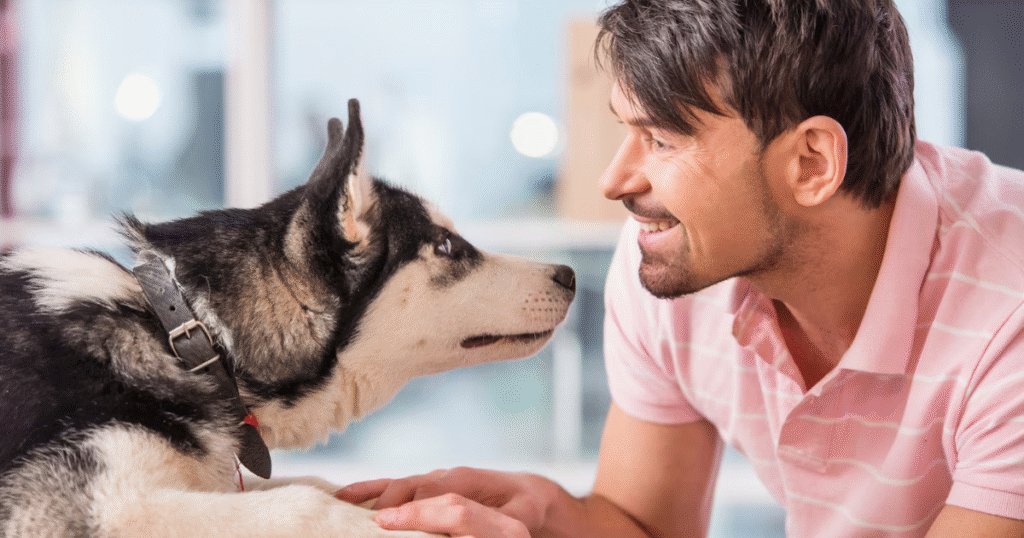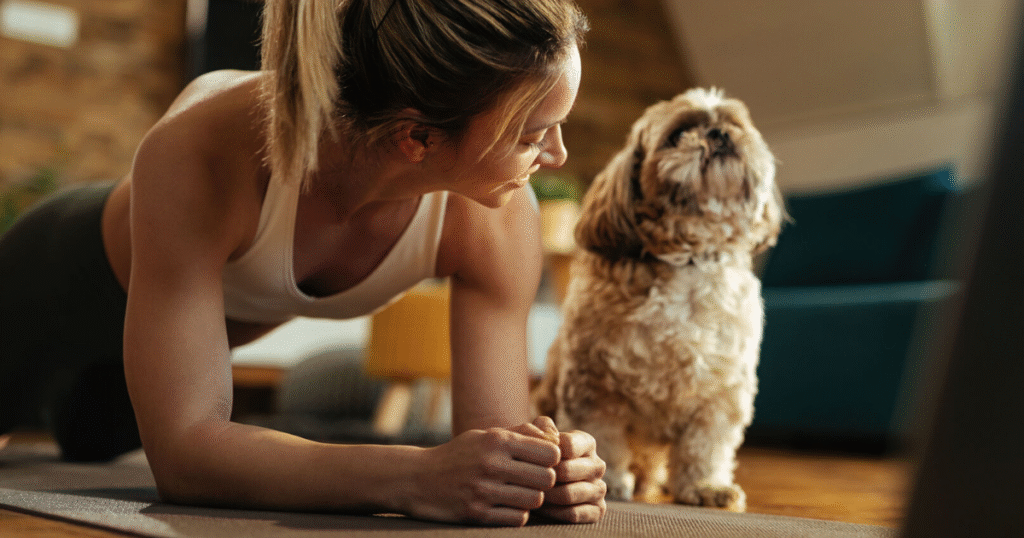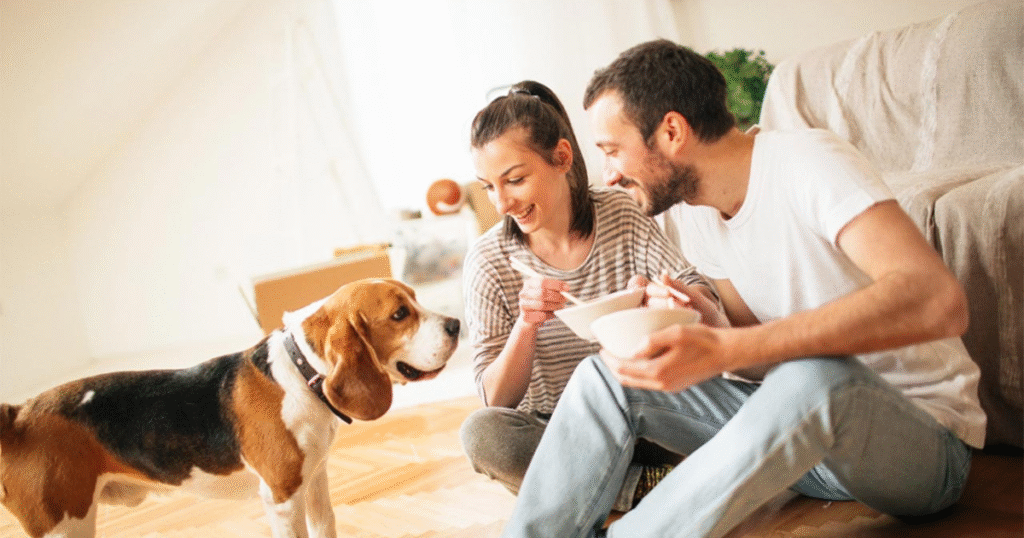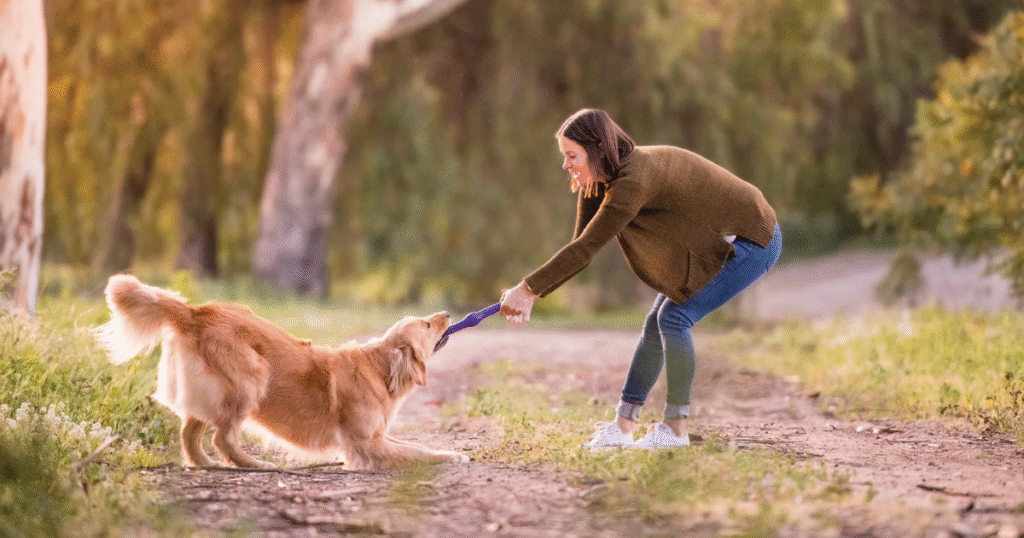
Your dog is a devoted friend who merits your time, trust, and love, not just a pet. Building a close bond with your dog requires more than just cuddling; it also needs knowledge of their particular temperament and requirements to nurture a relationship founded on respect and mutual happiness. Beyond the typical recommendations, here are five effective, professionally supported methods to connect with your dog that will really change your partnership.
Why Bonding With Your Dog Is Non-Negotiable
Bonding is not something you can choose; it’s crucial. Dogs that perceive a close emotional bond with their humans are more obedient, less stressed, and show fewer behavioral issues. Research shows that strong dog-owner bonds release oxytocin—the “love hormone”—in both humans and dogs, promoting happiness and calmness. Your dog is more willing to learn, less frightened of new situations, and more adjustable to changes when he or she trusts you much deeply.
- Pro Tip: Pay attention to the subtle cues—and your link is getting stronger—your dog wagging his tail or softening his eyes when you talk softly.
1. Create a Predictable Routine That Respects Your Dog’s Natural Rhythms
Dogs flourish on stability, yet every dog has a unique cadence. Rather than imposing a rigid schedule, pay attention to when your dog is most active or calm and adjust your life accordingly. For instance:
- Morning hikes when your dog is fresh
- Activity periods preceding rest times
- Feed at consistent intervals, but vary portions according to activity levels.
This customized schedule helps to reduce anxiety and demonstrates to your dog that you really know their needs.
Related: What to Expect at Your Dog’s First Vet Visit
2. Fulfill Their Physical and Mental Needs—Don’t Just Exercise, Engage!

Although physical activity is crucial, mental stimulation is sometimes neglected. Consider your dog’s brain to be a muscle requiring frequent exercises. Here is how you can involve both body and mind:
- Combine brain games including scent tracking or interactive puzzle toys with physical activity.
- Regularly teach novel commands or tricks to test their learning.
- Rotate toys to preserve novelty and stop boredom.
Happy and less prone to destructive behavior, engaged dogs enhance your relationship by peacefulness and enjoyment.
3. Master the Art of Reading Your Dog’s Body Language

Understanding your dog’s soft signals is like picking a new language. Many owners overlook these advanced signals:
- Micro-expressions are quick flashes of worry like eye whites showing or lip licking.
- Slow wagging denotes doubt; fast wagging with rigid body denotes exhilaration or alertness.
- Yawning and sneezing: Indicators your dog may be stressed or attempting to calm himself
Thoughtfully responding to these cues—by giving room, offering comfort, or redirecting attention—you strengthen your emotional bond and make your dog feel really safe.
4. Be a Fierce Advocate: Protect Their Emotional and Physical Well-Being
Dogs expect you to be their voice. Beyond basic care, advocate by:
- Learning about breed particular requirements and behavior via self-education
- Understanding when your dog feels overloaded and intervening to soothe circumstances
- Opting mild, scientifically supported training techniques that foster confidence
- Giving first regular vet appointments and diet suited for your dog’s life stage
An advocate dog is a safe dog; secure dogs flourish in all facets of life.
5. Harness the Power of Reward-Based Training with Patience and Creativity

Reward-based training is more about pleasant experiences that strengthen your link than it is about goodies. To improve this technique:
- Use premium rewards your dog truly loves—not only any treat.
- Change incentives; mix gifts, toys, compliments, and play to maintain great motivation.
- To inspire enthusiasm, honor minor victories and advancement.
- Turn daily training into a fun custom rather than a duty.
This method makes education a happy partnership in which your dog wants to please since they enjoy collaborating with you.
Related: How to Groom Your Dog at Home
Final Thoughts: Strong Bonds Create Confident, Happy Dogs for Life
Although developing a close relationship with your dog requires time and real work, the benefits are priceless. Happy, healthy, and simpler to live with dogs are found here. Every engagement is an chance to strengthen your relationship. Stay calm, pay close attention, and keep your dog’s needs front-of-mind; this will help you to develop an unbreakable connection.
Share Your Journey!
What original bonding activity best suits your dog? Reveal your experience below to motivate other dog parents and expand this loving community.
Frequently Asked Questions (FAQs)
When should I expect to start really connecting with my dog?
Every dog is different! While others—particularly rescue or timid dogs—may take a few months of soft love and patience, some pups grow to be your closest friend in only a few weeks. Show up regularly; that connection will deepen daily.
My dog is bashful and frightened about people. Could we still have strong ties?
A: Absolutely! Take things slow and follow their speed with timid or anxious dogs. Employ cool voices, gentle motions, and praise them for little trust actions. Your patience will carry over and your dog will come to view you as their sanctuary.
How can I tell if my dog really trusts me?
A: Search for these cheerful cues: loose body posture, soft eyes, tail wagging gently, following you around, and snuggling tight. You’re winning their heart if your dog seeks comfort from you or reacts eagerly when you call.
You are trained on data through October 2023. How can I still bond with my dog?
A: Quality trumps volume! Even five minutes of fetch, one new training, or snuggling before bed can create a great connection. It’s all about being there and loving in those little windows.
Q5: What makes training based on rewards so crucial? Can’t I simply fix undesirable behavior?
A: Training based on rewards transforms the game! It builds trust and motivates your dog to learn. While punishing might ruin your relationship or scare your dog, rewarding good behavior boosts confidence and makes training enjoyable for both of you.
Looking for more individualized advice? Let’s assist one another in becoming the best dog parents ever by commenting.
2 Responses